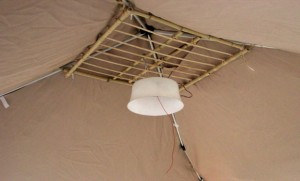Thanks to U of T’s Impact Centre, people in rural parts of the Philippines may soon get access to something that the western world takes for granted: being able to walk into a dark room, flick a switch and get instant light.
Professor Cynthia Goh, the Centre’s director, said rural areas of the Philippines, along with other regions of the global south, rarely have access to electricity.
The Philippines are close to the equator, so “it goes from very bright to very dark within a few minutes,” Goh said. “The sun goes down at 6 p.m. sharp and rises at 6 a.m. every day, which means for 12 whole hours, inhabitants are not able to study, do housework, or be productive.”
To celebrate the 2015 International Year of Light, the Impact Centre – part of U of T’s Banting & Best Centre for Innovation & Entrepreneurship – set itself a goal to create a reliable, low-cost light that provides at least four hours of light a day.
“We want it to be bright enough and a good enough quality so that a child can read and a mother can cook,” Goh said.
The light also had to easy to use, she said. Many lighting solutions designed for developing countries require winding up or pumping, or only provide inadequate, short-term light, she said.
“A poor fisherman or farmer who’s been working all day does not want to have to keep pumping a flashlight in order to light his house. Just because people are poor, doesn’t mean that they should be subject to inconveniences.”
The Impact Centre’s lighting solution is a great example of the kind of social entrepreneurship that flourishes at U of T, said Karen Sievewright, director of U of T’s Banting & Best Centre for Innovation & Entrepreneurship.
“The breadth and depth of research coupled with a wide range of support at the university allows our entrepreneurs to bring better, smarter and more sustainable lighting to the world.”
Goh and her Impact Centre colleagues unveiled their solution at an International Year of Light symposium on Oct. 29 at U of T: a ceiling-mounted solar-powered lamp that incorporates 16 LEDs and provides 500 lumens of light for four hours, or dimmer light for a longer period of time.
The lamp, which can be turned on just by touching a cord, was developed over the summer by a team of Impact Centre engineers. It is expected to cost about $24, which can be paid by instalments. The lithium ion battery will last about a year and will cost about $12.

The actual lamps will be assembled, distributed and sold by small businesses in the Philippines. Four lamps will be installed as a pilot test in December 2015.
“We’ll get feedback from them and then scale up to 200 in January next year,” Goh explained. “We’d like to check out whether the business model we’ve come up with actually works. We want to show that we can have something of good quality and still bring it out to the market at a price that people find accessible.
“Eventually we’d like a sustainable model that can be deployed or adapted elsewhere in the world,” she said.

